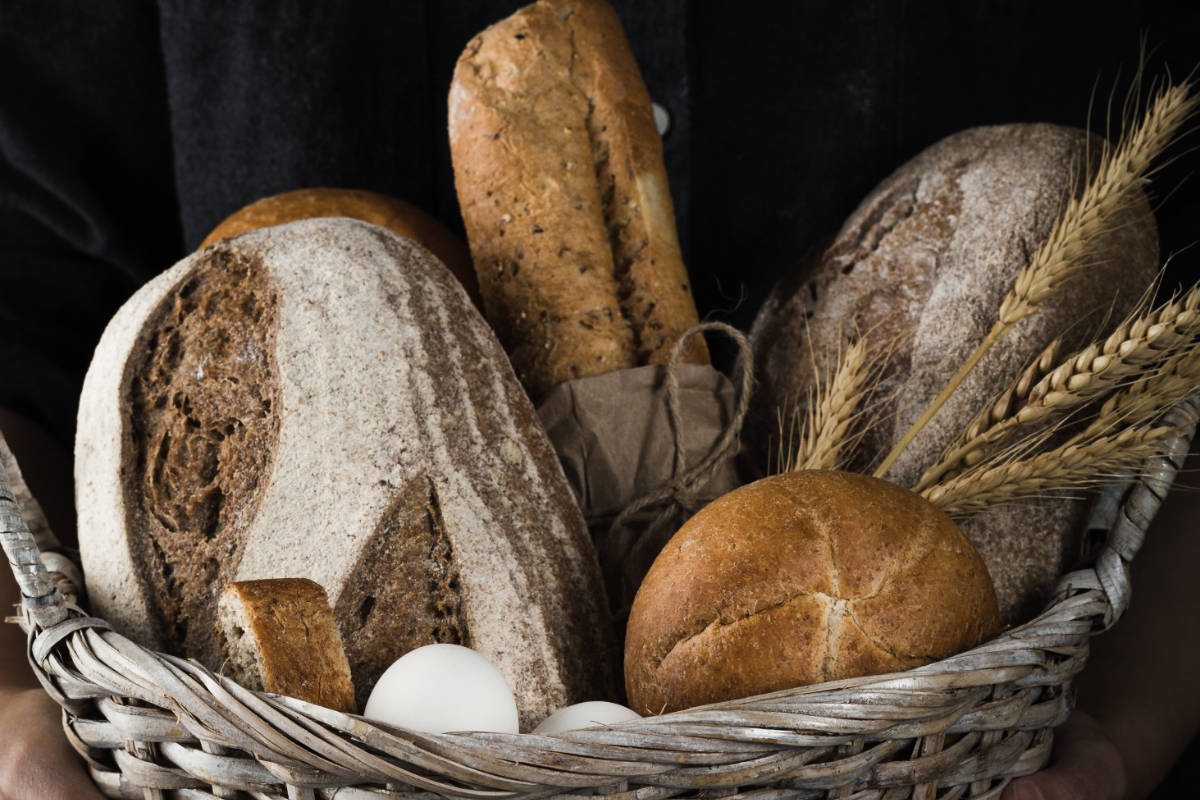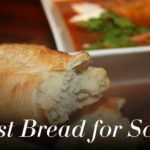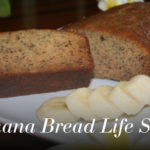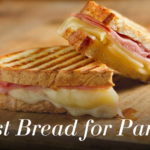Not every loaf of sourdough bread must be an artisanally created no-knead boule baked to perfection in the most socially acceptable cast iron dutch oven. I know, blasphemy. There are many different types of sourdough bread, equal in their utility and beautiful in their own yeasty way.
Okay, kidding aside, let’s have a look at just a few of the different things that you can make with flour, water, salt, and ripe sourdough starter. Also, check out this article for sourdough bread flavor combinations.
The different shapes of sourdough bread
This list is not exhaustive. There are many other shapes of bread that you might come across; however, this list shows the loaves that you’re most likely to encounter in recipes online and in books. I will also work on keeping this list updated from time to time as I discover and try some new types of sourdough bread ideas.
The boule
This is the classic that everyone is familiar with and that all sourdough bakers these days are trying to perfect. It’s a round sourdough loaf that is often scored so that it opens up when baked, leaving a wonderfully crunchy “ear” along the top.
Meaning “ball” in French, it does resemble a flattened ball if all goes well during the baking process. If you get a nice oven spring and your loaf rises well, then you’ll have something that looks like two thirds of a ball. If things don’t go well, you’ll most likely end up with something that looks more like a frisby.
You can also make mini boules, which I highly recommend doing for practice. It allows you to go through the process without going through too much flour. You can also try out new sourdough bread flavor combinations a lot more easily with mini boules.
What you’re looking for with a classic boule is a dark, thin crust that is nicely crunchy and toasty in flavor. It should also have a soft interior and a somewhat irregular, open crumb structure.
They’re great for everything, including tearing apart for dinner, sandwiches, toast in the morning, giving away as gifts, and anything else you can think of.
The baguette
If you’re into sandwiches, bruschetta, or eating bread with pasta, you need to learn to make a classic baguette. The basic qualities of the bread itself should be very similar to the boule, but often the crust is even thinner and should be very crispy.
The shape should be long and slender, like a fat stick, which is basically what the name means in French. If it’s too fat, it might become a batard.
When done properly, these are absolutely amazing for banh mi sandwiches. The thin, crisp crust goes so well with the pickled veggies, meat, and cilantro. They’re also delicious when made into a classic French dip.
The batard and baton
So, this is what you’ll get when you combine a boule and a baguette. If those two loaves had a baby, it would have a slightly thicker crust and a heartier interior like the boule but a longer, thinner shape closer to a baguette. In general, the batard will be about half as long as a baguette, but will also be much wider. It often looks like a slightly smaller, oval boule.
This loaf makes great toasting bread. It can be easier to use for sandwiches than a boule as well since its size is more consistent all the way through. Boules tend to be harder to toast and use for sandwiches as you use the ends and the very middle.
The pan loaf (sandwich bread)
One of my favorite ways to make sourdough sandwich loaves. This is what you’d expect when you go to the store for a loaf of bread. While there are lots of different variations to loaf pans, in general they provide a long, rectangular loaf of bread with a rounded top.
You can score the top of a pan loaf, or you can just bake as is. I do both. You can also very easily add in flavors and seasonings for a different kind of loaf. This shape is perfect for toast as well.
This is one of the types of sourdough bread I love to suggest learning with. It’s forgiving, and it allows you to focus on ingredients, the overall process, and your environment.
The focaccia
This is another favorite of mine for learning to work with sourdough. Focaccia is the flat, wide pan-baked bread that you may be used to seeing sliced and served as breadsticks. It should have a golden color and dimples throughout the surface.
The texture is chewy and hearty, but it shouldn’t be tough. It makes amazing appetizers with a drizzle of olive oil and balsamic vinegar. We like to drizzle a small pool of olive oil in a plate and dribble some balsamic vinegar into that. Then we add a bit of salt and pepper and dip chunks of focaccia into the mixture. Amazing with beer or wine too!
You can also make a very good pizza from a focaccia, or you can keep reading on to pizza dough.
The pizza dough
You know, like for pizza. Making a pizza dough with sourdough starter is a wonderful experience. If you haven’t tried it, you should.
My favorite pizza dough is light, chewy, and baked on a really hot pizza stone until you get some burn marks. A pizza stone is such a great tool. It’s also a lot more versatile than you might think. It provides a very acceptable baking surface for almost any of the non-pan types of sourdough listed here.
You can make sourdough pizza dough in one day if you start early. You can also start the day before and let it rest in the fridge overnight.
The ciabatta
This is a small square or rectangular loaf, closer to a roll actually, that is perfect for sandwiches. The crust is usually a bit thicker and chewier than a baguette, but the interior should be very light and fluffy. I think these make excellent rolls for a very juicy burger or some kind of bbq pulled pork type of sandwich.
They’re lighter in color than some of the other types of loaves, and the flavor is also fairly neutral. Ciabatta rolls do take seasonings, such as rosemary, very well.
If you’re making something more delicate, opt for a soft baguette. You can end up with a situation where the contents of your sandwich are squirting out the sides with each bite. Having to reassemble a sandwich numerous times is not fun.
So many types of sourdough bread
I recommend trying as many of these shapes and styles as you can. It’s funny how strong people’s preferences can become with types of bread. It might come down to what your family likes to eat and what loaf pairs best with that. Or, it might have something to do with how often you make sandwiches or eat soup.
In the end, baking can be a very personal experience, which I think is wonderful. As long as you’re not shaming others for their love of ciabatta when you KNOW baguettes are the correct form of sandwich bread…it’s all good.
Let us know what you prefer and why, and share some pairing suggestions if you have them too.





